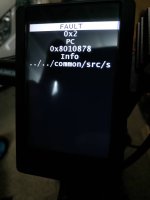Localhorst666
1 mW
- Joined
- Jan 17, 2020
- Messages
- 10
OK, I just read this issue #65 on GitHub. When I checked speed sensor yesterday, it seems to be working without light. I was able to start motor assistance three or four times, but I did not do a real test drive. So, I think you are right!
Should I measure the battery current just of my lights? Would that be an interesting value for you to fix this issue? But I think an individual value for lights current would be fine, like you proposed on GitHub. Every bike has a different lights setup.
I'll check it this evening and inform again. Thank you very much!
Should I measure the battery current just of my lights? Would that be an interesting value for you to fix this issue? But I think an individual value for lights current would be fine, like you proposed on GitHub. Every bike has a different lights setup.
I'll check it this evening and inform again. Thank you very much!


